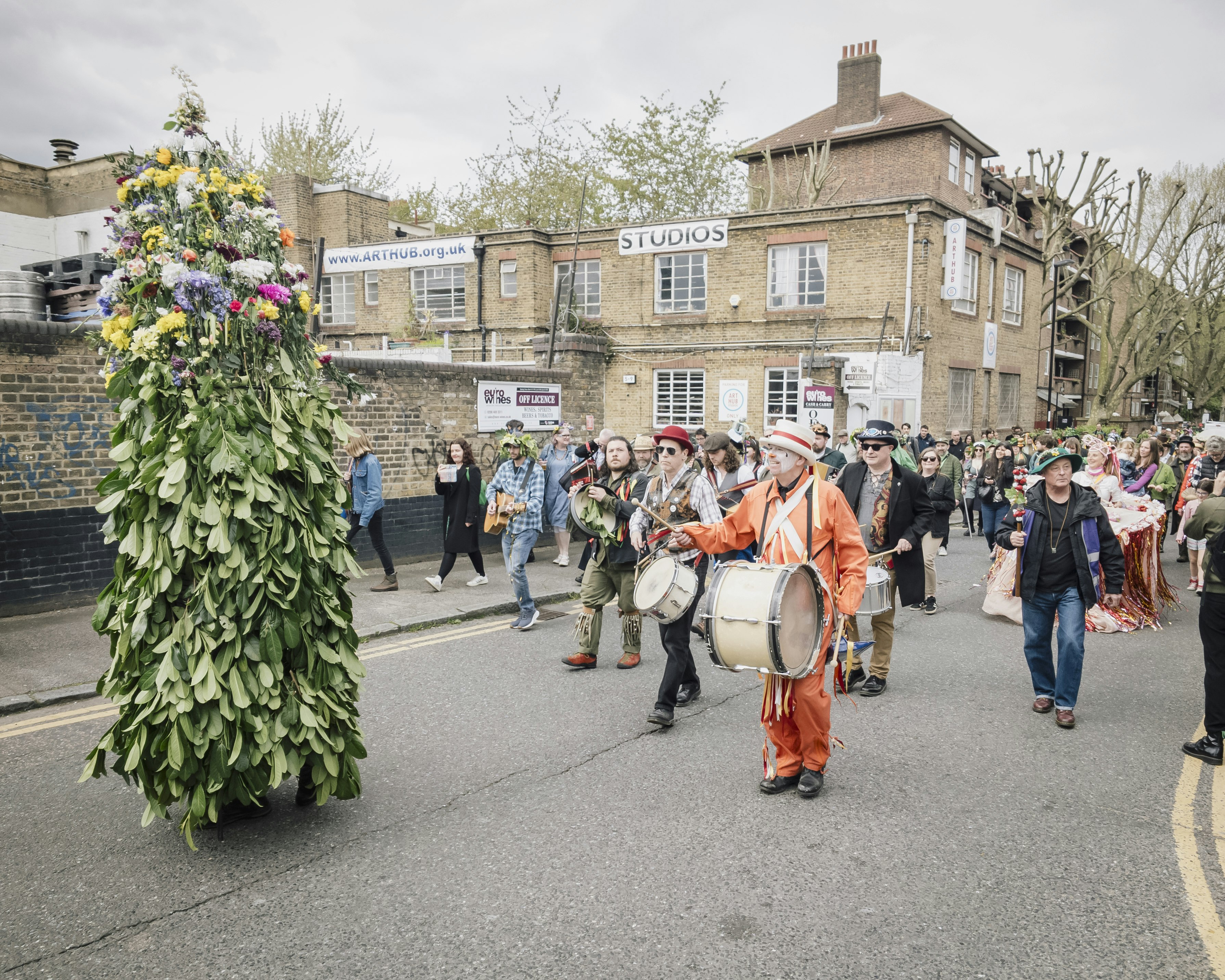Gareth Gardner Gallery's Close to the Hedge exhibition coincides with the 40th anniversary of the revival of one of Deptford’s most colourful traditions – the Jack in the Green.

On May 1st every year, a 3m-tall lattice structure festooned with sprigs of laurel and topped by a crown of spring flowers leads a parade around Deptford. It is accompanied by a huge crowd of attendants, musicians, morris men and folk dressed as sweeps, milkmaids, an Oss and various other characters, all dancing and playing to the beat of Tired Tim’s bass drum.
Inside the structure is a Jack Carrier who at various points on the route – mostly pubs – initiates a twirling dance known as ‘Jack’s Alive’ whipping the drunken crowd into a frenzy.
The parade begins and ends at the Dog and Bell pub; the crescendo is the ‘Slaying of the Jack’ where the structure is stripped of its greenery and all participants take a sprig away as a symbol of spring.
Its history stretches back several hundred years, associated in the 17th century with annual May Day milkmaid celebrations and subsequently with other groups. In urban areas, it was most notably embraced by chimney sweeps as an opportunity to collect money from onlookers. At some point their garlands of leaves and flowers became a separate beehive-shaped structure knows as the Jack in the Green.
In Deptford, the tradition was known as The Fowlers Troop Jack in the Green – it is believed that the Fowlers were possibly a family with chimney sweeping connections. It was just one of many such celebrations which thrived around the country, with a heyday in the early 19th century. By the early 20th century they mostly disappeared, due to increasing moral disapproval. May Day became less anarchic and more organised, child-friendly and polite, and the police increasingly suppressed the more disorderly chimney sweep shenanigans. Raucous Jack was supplanted by the genteel May Queen.
The revival of several Jacks around the country from the late 1970s onwards is strongly associated with a resurgence in folk studies and morris dancing in the 1970s/80s, the DIY punk rock movement and a growing interest in psychogeography.
In Deptford, the revival was led by the Blackheath Morris Men and their friends, and was particularly inspired by a print by local photographer and historian Thankfull Sturdee from the early 1900s, not long before the tradition was abandoned.
The route is carefully planned to maximise the interplay of the unexpected and everyday, where local residents might turn a corner and encounter a giant walking bush and its attendants.
Suprisingly, there is no recorded links between Jack in the Green and earlier pagan traditions such as the Green Man.

